The family and I have spent the last four days in the Maine woods, where my aunt and her husband had rented a cabin so that our extended family could celebrate my father’s 75th birthday together. Aside from falling in Maine’s largest lake while completely clothed, having to scrub vomit from the upholstery of a rental car on the side of the highway in New Hampshire, and somehow managing to get sun poisoning on just one lip, it was an incredible trip. [While I was careful to apply sunscreen, it hadn’t occurred to me to do anything to my lips, and now the lower one is swollen to the point where it burst open in several places, like a package of cheap Piggy Wiggly hotdogs left for the summer on the dashboard of a ’72 Chevy Vega in a police impound lot.] If I didn’t have to do multiple loads of laundry, and catch up on my other household chores, I’d tell you all about our time on Sebago Lake, the numerous lobster rolls that I consumed in violation of my wheat boycott, and the festivities surrounding my father’s graceful descent into old age. As time is short, though, I’m just going to share one thing with you… a story about gambling and theft featuring my great-grandfather, Curtis Florian, that involves the fabled steamship, The Robert E. Lee.
Here’s how I came to hear the story… Just as we were getting ready to sit down and have dinner on our last night in Maine, my aunt called everyone together to give my father a birthday gift, which appeared, given the packaging, to be an enormous bottle of tequila. Inside the box, however, wrapped in burlap, was a small statue of a man on horseback, which my father, from the look on his face, immediately recognized. As he held it up to show everyone, he said, “This sat on the mantle of the house I grew up in… My grandfather stole it off the gambling boat, The Robert E. Lee, in the early 1900s.” [That’s The Robert E. Lee, nicknamed “The Monarch of the Mississippi,” just above.]
Here’s the statue that my Aunt Betsy found and refinished for my father using catsup and a toothbrush. She said she rubbed the horse’s ass too hard, but, otherwise, it looked great.
While I’d never heard that it had been stolen off of a gambling boat, I was familiar with the piece. It was one of two pieces of artwork in the old farmhouse where my great-grandparents lived, and I distinctly remember being told not to touch it as a child, as, according to my father, it sat on top of a clock whose inner working had been removed to make room for a snub-nosed .38 revolver. [The other piece of artwork was a copy of Cassius Marcellus Coolidge’s famous 1894 painting Dogs Playing Poker.] It’s also worth noting that this was not the only gun hidden in my great grandparents’ home, as they also each slept with loaded pistols under their pillows, as I recall.
According to my father, my great-grandfather had told him that he’d stolen this statue from the steamboat at some point during a night of gambling. [It’s unclear to me whether he claimed to have stolen just the statue, or both the statue and the clock which sat beneath it on their mantel.] I was initially somewhat dubious, as I knew that The Robert E. Lee traveled up and down the Mississippi River, but, then, doing a bit of internet sleuthing, I found a reference to the fact that, “during spans of bad business, (The Robert E. Lee) would forsake Natchez and instead go to St. Louis or Louisville, Kentucky.” [The Mississippi River and the Ohio River meet in Cairo, Illinois.] So, it’s certainly conceivable that a hard-drinking poker player in Kentucky could have stolen something off of The Robert E. Lee. The question is, could it have been my great-grandfather, who was born in 1892, 26 years after The Robert E. Lee first went into service.
And here’s where I start to loose confidence in the story, at least as it was explained to me the other night by my father. While it’s conceivable, I suppose, that The Robert E. Lee was repaired and relaunched after the fact, the last news item I see about the storied old paddle-wheeler is from 1882 — ten years before my great-grandfather was born — when a deadly fire broke out abroad the ship, killing 21. [The New York Times, as you can see here, uses the word “destruction” when talking about the boat in the context of the fire.]
OK, so a few things may have happened. The “destroyed” ship could have been repaired, and had a second life as a gambling boat. Or, perhaps more likely, my great-grandfather could have been on an another boat owned by the Lee Line, as they had a number of similarly named boats. [The owners were apparently big fans of the Confederate General, and wanted to keep his legacy alive after the Civil War.] I think there’s another possibility, though. I think it’s conceivable that my great-grandfather stole The Robert E. Lee’s statue/clock, but that he didn’t steal it from ship itself.
You see, when reading about the famous 1,200-mile race that took place in 1870 between The Natchez and The Robert E. Lee, which The Robert E. Lee won, cementing its reputation as the fastest steamboat in the world, I happened across an interesting fact. John W. Cannon, the colorful Captain of The Robert E. Lee, was from Frankfort, Kentucky, where my family hales from. [My great-grandfather lived just outside of Frankfort for a majority of his life. I should note that I too lived in Frankfort for a while. In fact, I’m told that I won the “Little Mister Frankfort” beautiful baby contest at some point in the late ’60s.] Well, apparently Cannon died in Frankfort in April, 1882, after a protracted battle with what’s been referred to as “a slow form of tuberculosis”. So, the Captain and his family were somewhere in Frankfort, not far from where, not too much later, my great-grandfather would be making and losing fortunes over hands of cards. “Is it possible,” I wonder, “for the statue to have changed hands in Frankfort, ultimately winding up in the possession of my great-grandfather?”
I should add here that my great-grandparents weren’t wealthy when I knew them, lest my comment about “fortunes” should give anyone the impression that they were William Zanzinger-like characters who inherited tobacco wealth and walked around town wearing diamond rings. Toward the ends of their lives, they lived in a very simple farm house, sleeping in separate twin beds (just off the kitchen) that sat at a 90-degree angle to one another, with a gas heater and a small television between them. My father tells me, however, that, while they were never what we’d call rich, there were years that they did quite well, reaching a high point in the 1950s, when they had a 60-acre tobacco farm of their own on a parcel of about 1,000 acres. [I need for my father to show me where this farm would have been, as I only remember their later house (described above), which was near Georgetown, Kentucky, in an area referred to as White Sulfur.] So, all things considered, they did pretty well for two people who, as teens, got married, started farming the land of others, and eventually got a place of their own in the small town of Rabbit Hash. [To hear my dad tell it, their fortunes began to change during the flu pandemic of 1918, when, as everyone around them was dying, they kept going, farming more and more land for those who no longer could. My father says my great-grandfather was able to do this, and not get the flu himself, by “staying drunk” for the duration. And that’s how they came to eventually own their own farm, where they raised my father. Even then, though, they still lived in a house without insulation, electricity, or indoor plumbing. They wouldn’t get a house with those things until my dad was about eight years old.]
I should also mention here that my father, when telling us about how my great-grandfather had told him that he’d “stolen” the statue/clock, made it a point to add that he could have just meant that he won it off of someone in a poker game. And, as long as I’m adding footnotes, it’s probably also worth noting that, by the time I knew my great-grandfather, he no longer drank or gambled. He apparently just had a very strong will, and one day just decided that he was done with it. I don’t know for certain, but this could have been shortly after the time that my father remembers him sitting outside, on their front porch all night with a gun in his lap, waiting for someone that he’d just beaten in poker to come and make good on a promise to kill him. [My father, if I didn’t mention it earlier, was pretty much raised from the age of two by his great-grandparents.]
So, given all of this, I’m inclined to say that there’s a good likelihood that this statue that my aunt presented to my father did, at some point, reside aboard The Robert E. Lee. I suspect, however, that he probably didn’t steal it off the ship. At least that’s my guess. Now I just need to find an expert on the interior design of steamships just after the Civil War.
Here, for those of you who made it this far, is a close-up photo of the Wild Bill Cody-type character riding the horse. [A high-res version of this photo can be found here.] If I had to guess, I’d say he’s just a generic frontier scout or Pony Express rider, but I suppose he could be a specific person from the era. And, no, I don’t think it would have actually been Buffalo Bill Cody, as he was a Union soldier, and I doubt that would have gone over so well on The Robert E. Lee. It’s also worth pointing out that the person on the horse doesn’t appear to be wearing a uniform of any kind, which is why I suggested that it might be a generic frontiersman, as opposed to, say, a Confederate soldier.
OK, that’s it. If you can provide any suggestions as to where I might look to find out more about this statue, I’d appreciate it. As this was clearly made from a mold, I’m hopeful that there are others in circulation, but, as of right now, I haven’t had any luck on my own.
Oh, and I’ve told you about Curtis Florian before.
update: Well, that was fast. My friend Doug Skinner just confirmed that I was onto something when I said that the figure looked like Buffalo Bill Cody. This piece, at least according to Doug’s research, was apparently a souvenir sold at Buffalo Bill Cody’s Wild West Show, which began making it’s way across the United States in 1883. Here’s a write-up about the statuette from an online retailer of western goods and artifacts called River Junction Trade Company, which posted one for sale not too long ago.
This is a very old statue. These were made between 1870 and 1910, and were sold as souvenirs at BUFFALO BILL’S WILD WEST shows of the late 1800s, and turn of the century. Buffalo Bill Cody would tour the country, mostly in the east, and pretend to fight Indians and kill buffalo. These souvenirs, were sold at these shows and this is one of them.
This is a very old casting, you can tell by the fact it was cast in many pieces and braised together afterwords and by the steam holes to let out heat in the foundry. This measures over 10 inches tall and over 9 inches long, and weighs 3 pounds. It is in amazingly good condition. This has most of its originally antique bronze finish remaining and the metal has a great patina.
Look closely at the detail. The base is ornate with flowers and ferns. The horse is a prancing steed, two feet off the ground. The rider and saddle is a separate casting from the horse. He wears the long hair and mustaches of that period. He wears fringed buckskin pants, a bow tie with long tails, and a vaquero type jacket and a big hat with a feathered plume. Slung across his back is a rifle. He has one outstretched hand in the air and it holds a metal lariat. The horse itself has a metal bridle and reins.
It is very rare to find the original reins intact and in good condition. This is guaranteed old, genuine and original.
Here, if you’d like to see it, is a link to an image of the online auction page.
OK, so if these statuettes started selling in 1883, and The Robert E. Lee was destroyed by fire in 1882, it likely wasn’t onboard… So, with that said, I think there are a few different scenarios to consider. 1) It’s probably unlikely that my great-grandfather would lie about such a thing to my father, but it’s conceivable that he made the whole thing up… or, I guess, imagined it, after drinking his way through the Spanish Flu pandemic of 1918. 2) My great-grandfather acquired the piece in a card game (or stole it) from someone who had lied to him, telling him that it had come from The Robert E. Lee, perhaps in hopes of driving up its value in a bet. 3) When he told my father that the piece on their mantel had come from The Robert E. Lee, he wasn’t talking about the statuette at all, but the clock beneath it. And the statuette of Buffalo Bill Cody was just something that he’d added to it prior to my father’s birth…. So much to think about. [I really wish that my great-grandfather had blogged.]
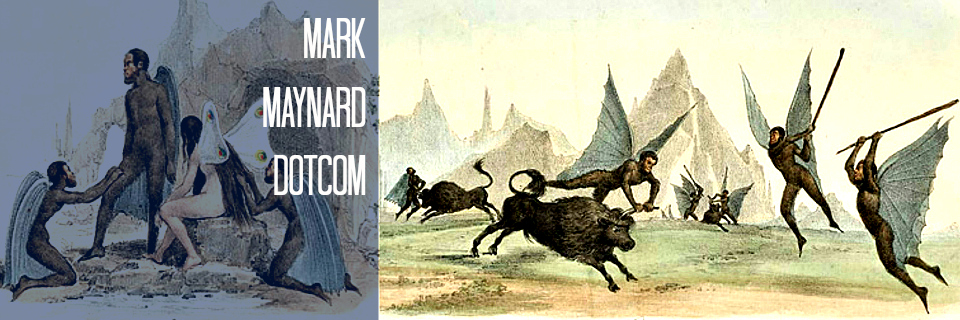
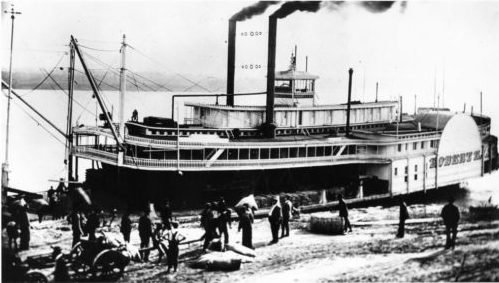
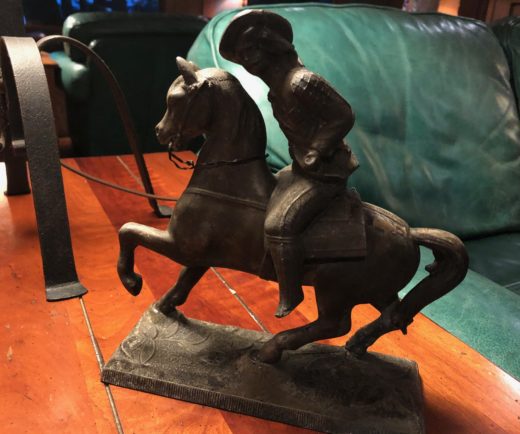
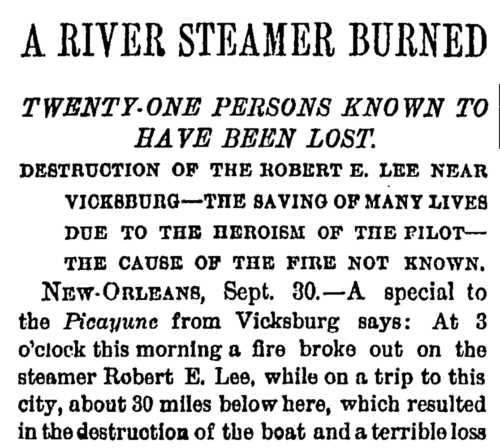
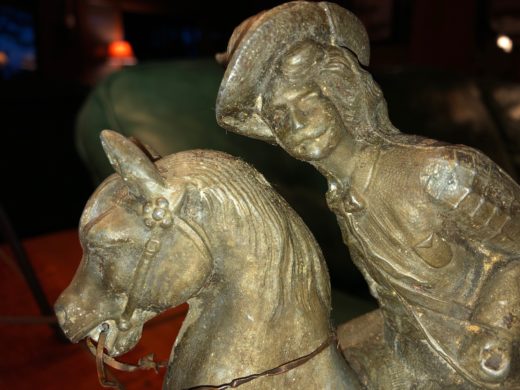







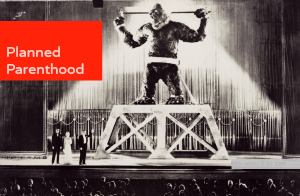



9 Comments
Mark — It looks a lot like this statuette of Buffalo Bill, sold as a souvenir at his shows. What do you think?
https://www.riverjunction.com/z-Sold-Buffalo-Bill-Statue-Souvenir-of-his-Wild-West-Show_p_1961.html
Holy shit, Doug… That’s it exactly! I knew it looked like Cody. Thanks so much…. Now I suspect someone must have lied to my great-grandfather about the piece’s origin, maybe in order to drive up the value in a poker game. Fascinating.
I think I remember seeing one of these Bill Cody souvenirs on PBS’s Antiques Roadshow.
Every old family story I’ve investigated has proven inaccurate but also partially true. It seems the narratives morph over time and storytellers to some make a better story– so heightened drama, consequence, reward, and usually some mortal petrol and evidence of courage or magnanimity. There is also commonly a transference about some detail that happens over time and versions. These bits remain a mystery. Why the change? What association cause one person, place or thing to morph to another? These stories still seem to contain some kernel of essential truth about the nature of a family and it’s idea of itself.
’You don’t know about me without you have read a book by the name of The Adventures of Tom Sawyer; but that ain’t no matter. That book was made by Mr. Mark Twain, and he told the truth, mainly. There was things which he stretched, but mainly he told the truth. That is nothing. I never seen anybody but lied one time or another, without it was Aunt Polly, or the widow, or maybe Mary. Aunt Polly—Tom’s Aunt Polly, she is—and Mary, and the Widow Douglas is all told about in that book, which is mostly a true book, with some stretchers, as I said before.’
From Huckleberry Finn, the Greatest American Novel.
Mark, holy crap! My wife and I are in a cabin on Moosehead Lake. I got lost as hell on”The Golden Road” last night. GPSsucked. Took me down two track logging roads and finally I met a truck who know how to get back to Greenville. Hope you are having a great time!
Surprised more people didn’t want to talk about this today…. Was there something else going on?
Rat,
I turned on my television, tuned to the local Fox affiliate, and just saw the usual cooking and court shows, so I guess not. Must have been a very slow news day.
Great story and photos, Mark! What a wonderful present for your Dad. Kudos to Jean, too, for the wonderful quote from Huck Finn.
Very cool stories! Thanks.
One Trackback
[…] My parents, on this recent stroll down memory lane of theirs, also visited my great grandparents’ home in White Sulphur, Kentucky, about ten miles east of Frankfort. This is that house… the one I told you about not too long ago that had a hidden gun inside the clock on the mantle. […]